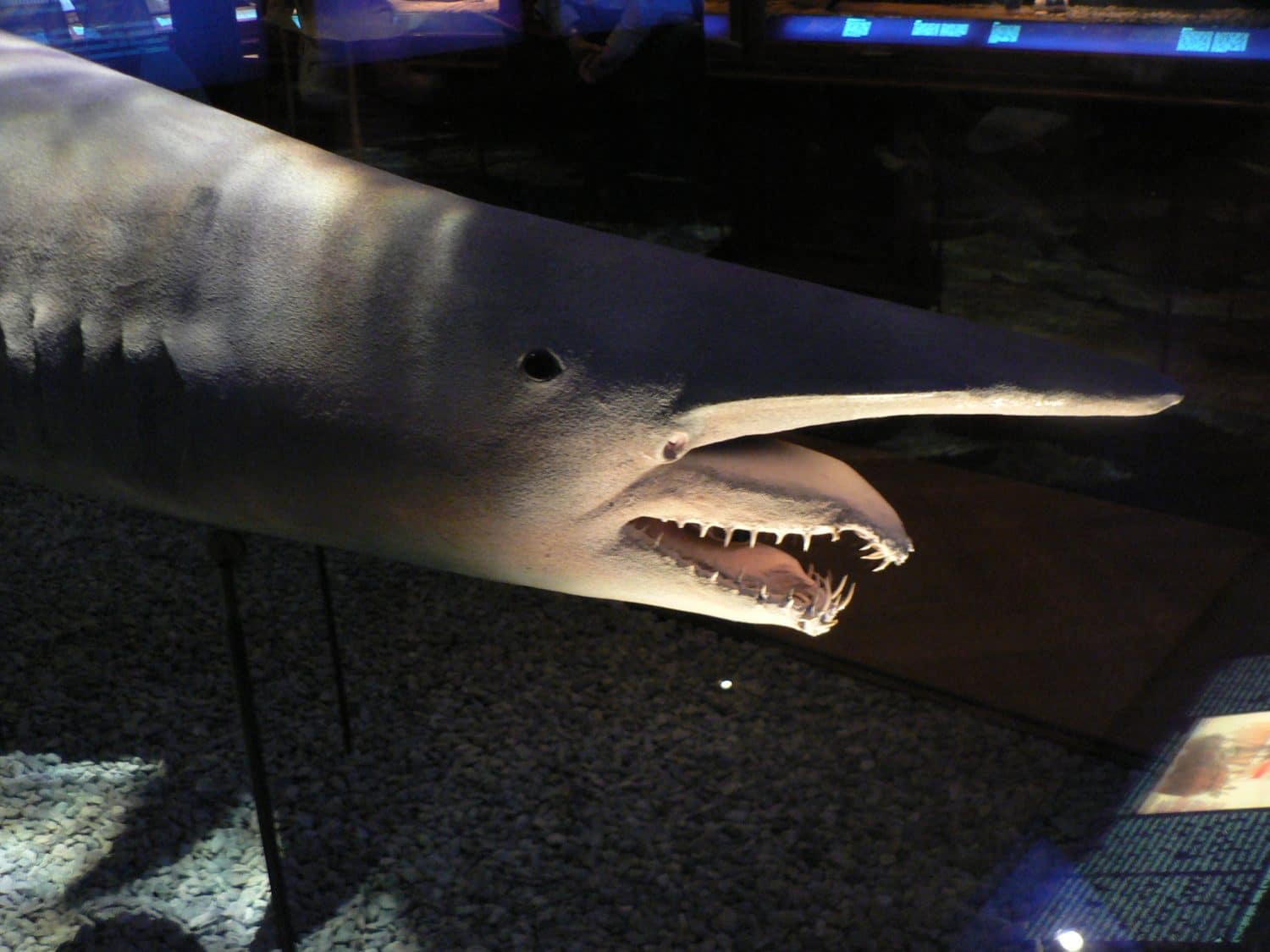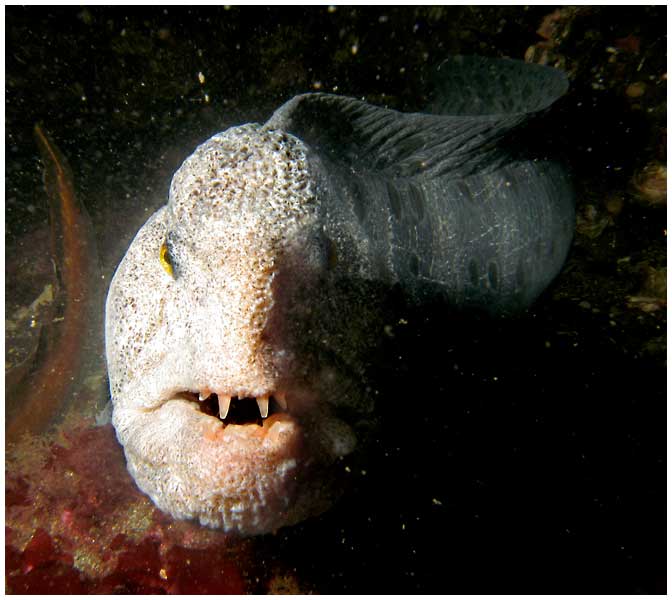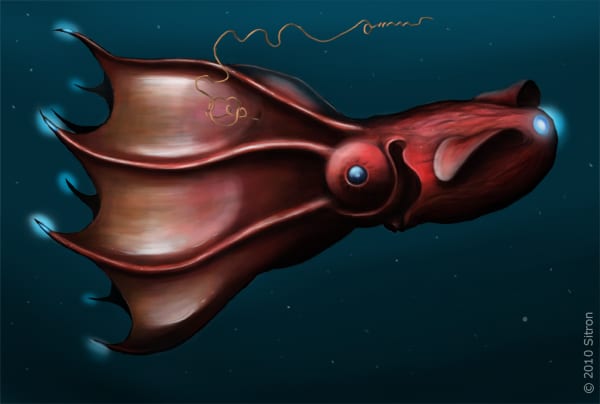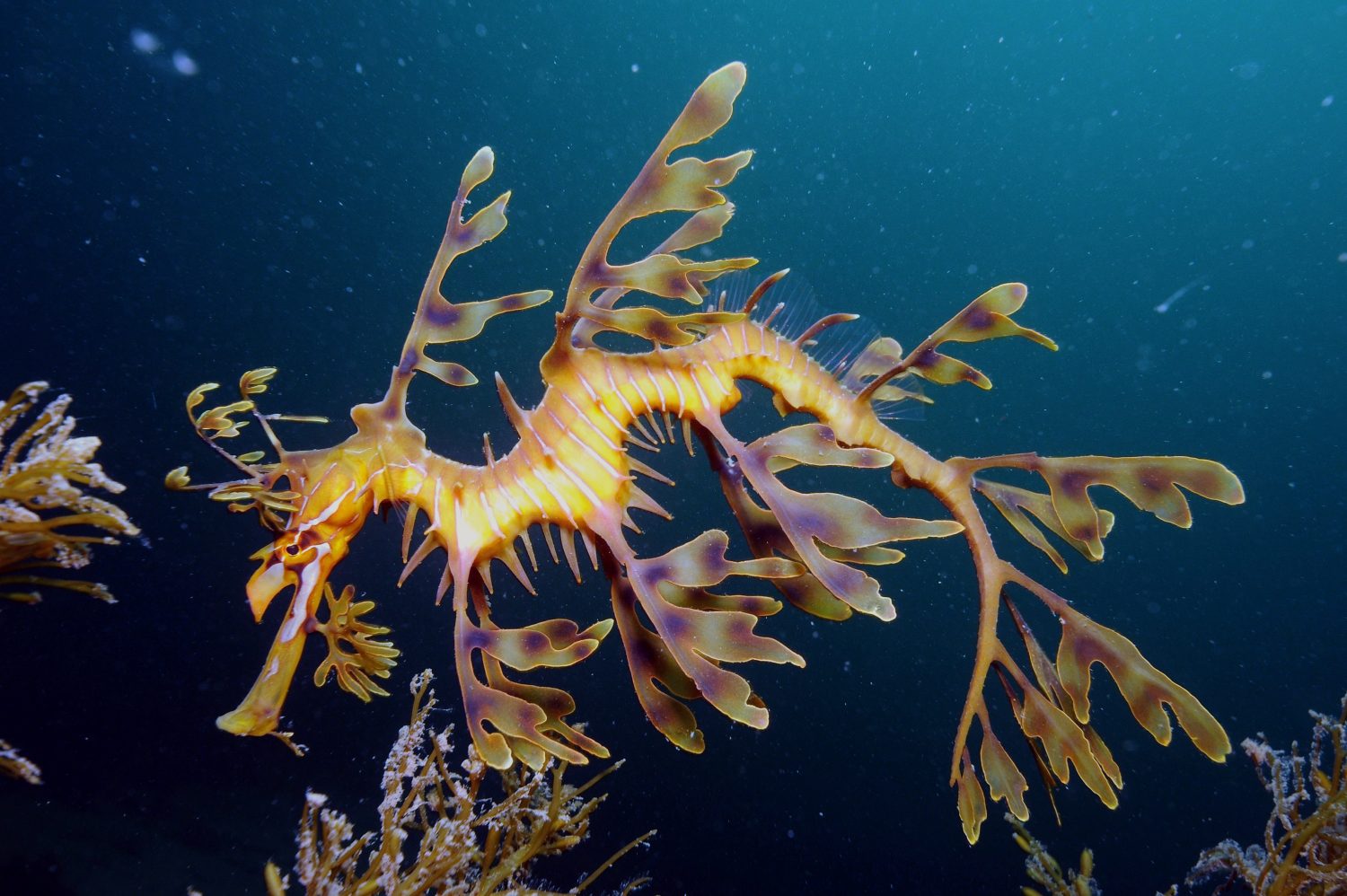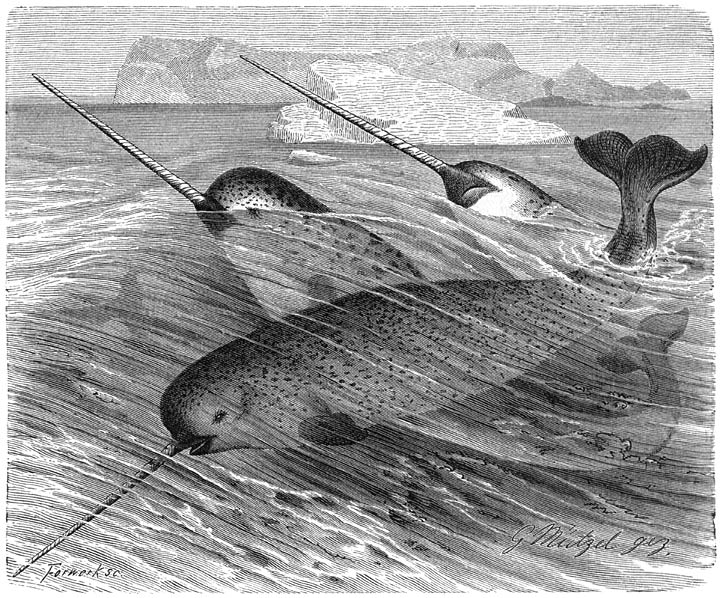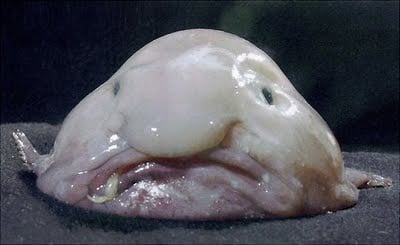Marine Life & Conservation
Fantastic (Underwater) Beasts, and where to find them!

By Gemma Smith
It is fair to say that there might not be that many underwater-specific spells, curses, potions or lotions. There may also be a distinct lack of any Nifflers, Nogtails, or Mooncalfs to see when we submerge and go diving. However, while we often look beyond the confines of our own world for enchantment and excitement, it is true without a doubt that the life we can encounter beneath the waves is bursting full of magic. As divers, we have a privileged portal to another world. And for many people, it may be even more captivating than they realise. There are just so many fantastic and mysterious animals living in our watery world. And these are just the ones we know about. There is so much left to explore in our oceans. Who knows what incredible creatures may still be unseen and undiscovered? And even for those more unusual ocean inhabitants, I think it’s important we always remember their unique charms! So, to showcase some of my favourite Blue Planet companions, here are my top five real-life ‘magical creatures.’
Goblin shark
The name alone is enough to intrigue you. Any animal named after the fabled goblin of fairytales and folklore is guaranteed to be amazing. In the Goblin Shark, you will not be disappointed. Even more interesting is how little we actually know about this species of shark. As a deep sea creature, it is the only remaining member of the ancient Mitsukurinidae family. Being referred to as a ‘living fossil’ is a testament to its ancestry. After all, it goes back all the way to the Cretaceous period!! This in part explains its surprising and primitive characteristics. It is best known for its unusual shaped snout, quite different from other shark species. Perhaps even more remarkable than its sword-like snout is it’s expanding jaw. It is able to move independently, and extend out when hunting. This is a peculiar, and perhaps bizarre, adaptation. Found swimming in depths ranging from around 40m/130ft to 1300m/4300ft, it might not be a sight you’d see on your standard dive, but there is no doubt these animals are otherworldly and incredible, with their translucent pinkish hue.
Where to find them: the Goblin shark is actually very widely distributed. Many of these sharks were caught off the coast of Honshu, Japan, at varying depths. More specimens were found in the Sagami and Suruga Bays of the same country. There is evidence of others in New Zealand and Australia. It is currently thought that they largely live near the sea bottom in the Indian, Pacific, and Atlantic Oceans.
Wolf-eel
Going somewhat against its name, the wolf-eel is actually not a true eel. It is one of just five species found in the ‘wolf fish’ family. I have many happy memories of diving with these wolf-eels in the cold ocean surrounding Iceland. Swimming in the freezing water around this country, then coming face to face with this prehistoric looking animal is always exciting. Striking and impressive they undoubtedly are…cuddly looking, though they are not. With a mouthful of sharp-looking teeth, a powerful jaw, and lengths over 2.5m/ 8ft long, they are a sight to behold. Their vicious appearance is actually not the whole story though. Wolf-eels tend to move slowly, and generally are only aggressive to fellow wolf-eels. In fact, there are many stories of wolf-eels becoming quite used to divers, and even eating from the palm of a diver’s hand! They are also secretly quite romantic! Pairs of wolf-eels are often known to mate for life. They are also devoted parents, with both staying in their den to guard their eggs while they wait for them to hatch.
Where to find them: unlike me, these wolf-eels like the cold. You can find them in the cooler waters of the Northern Pacific, ranging across from the Sea of Japan and the Aleutian Islands to California.
Vampire Squid
If we look at the Latin name for the vampire squid (Vampyroteuthis infernalis). We are greeted by one of the catchiest animal classifications possible. Roughly translating to ‘vampire squid from Hell’. There is no question of the initial impact this little cephalopod had on its audience! They are actually not nearly as scary as the name would suggest though. The ‘vampire’ in its title is simply in reference to its reddish-brown skin, the webbing between its arms which resembles a cape, and its red (and sometimes blue) eyes. Far from being the blood-sucking creatures of lore, they are harmless. Growing up to around only 30 cm/1 foot in length, they are the only currently known cephalopod that does not catch and eat live animals for food. While research is always ongoing, it is believed that these squids live primarily on ‘marine snow’. Marine snow is simply the sinking detritus from above them in the water column. While this ‘snow’ might not seem sufficient to live on, these vampire squids are frugal. Because they are living at depths with so little oxygen there are not many other creatures that could survive there. This means there is very little need to expend energy in order to escape from predators.
Where to find them: Vampire squid tend to occupy the temperate and tropical regions of the ocean. They do not like the shallows though and prefer to hang out in the 600m/2000ft to 900m/3000ft range.
Leafy Sea Dragon
I always knew dragons were real and incredible, and with the leafy sea dragon I wasn’t let down! This beautiful underwater creature is a marine fish belonging to the family Syngnathidae. This same family also includes pipefish and seahorses. While the leafy sea dragon resembles a seahorse more than a pipefish, it is thought more likely that it is, in fact, an intermediate step between the two. They get their name from their delicate covering of leaf-life appendages over all of their bodies. This is partly what makes them one of the best-camouflaged creatures you will (or won’t!) be lucky enough to see. They are perfectly adorned to blend in with the surrounding kelp and seaweed of the environment in which they live. While larger than their seahorse relatives, they are still relatively small. You will need keen eyes to pick them out on a dive. It will be worth it if you take the time to do so though.
Where to find them: The leafy sea dragon has only ever been recorded along the southern coastline of Australia. They like to live among seaweed beds, rocky reefs, and on sand patches close by weed-covered reefs. This way they can easily blend in to look like seaweed drifting in the current.
Narwhal
This animal is the closest most of us will ever get to seeing an actual unicorn. The narwhal is a true triumph of beauty and grace. It’s most striking feature is undoubtedly the long ‘tusk’ protruding from its head, which can grow up to 3m/10ft in length. Interestingly, this tusk is actually an enlarged tooth! It is a feature most commonly seen on males, although females have also been seen with one. Some whales can even have two tusks! Recent studies have indicated that these tusks may actually have quite significant sensory capabilities.
Together with beluga whales, the narwhal is one of only two living species of whale in the monodontidae family. They have captured the imagination of people for centuries. In legend, literature, art, and photography, the narwhal has always been a favourite subject. In fact, the Inuit believed the narwhal was a once a woman who fell into the sea, and whose long plaited hair is the explanation for the spiralling tusk of the narwhal. This happened when she was initially transformed from woman to whale. Looking at this beautiful animal, it’s not hard to see why it has continued to intrigue people through the ages.
Where to find them: make sure you wrap up warm for this one! Narwhals do not have a problem with cold water and spend all year in the Arctic waters around Canada, Greenland, and Russia.
Blobfish
Last, but definitely not least, there is the Blobfish. I almost didn’t include this one, but then I think it’s important to remember that beauty comes in all shapes and sizes! While the Blobfish is not the most photogenic animal you may see (after all, it was voted the world’s ugliest animal in 2013!), it is without question an interesting one. A deep sea dwelling fish, it is found at average depths of around 915m/3000ft, although sometimes much deeper as well. They spend their entire lives on the sea floor and have only been found when caught in trawling nets and brought to the surface. Due to the extreme pressure change the Blobfish never survives this. It is believed that at depth they may actually look much less engorged and that perhaps the marked decrease in pressure is to blame. Due to their preference for living at such depths, we really know very little still about this small creature. I have no doubt there is more to them than meets the eye!
Where to find them: Blobfish are native to the waters off Australia and New Zealand. Unfortunately, diving technology is not yet quite up to the depth requirement to see them in person. It will have to be a submarine if they are on your bucket-list of ‘fantastic beasts’ to encounter!
To find out more about International Training, visit www.tdisdi.com.

Blogs
The Ocean Cleanup Breaks 10,000,000 KG Barrier

The Ocean Cleanup, the global non-profit project, has removed a verified all-time total of ten million kilograms (22 million lbs.) of trash from oceans and rivers around the world – approximately the same weight as the Eiffel Tower.
To complete its mission of ridding the oceans of plastic, The Ocean Cleanup uses a dual strategy: cleaning up the Great Pacific Garbage Patch (GPGP) to remove the plastic already afloat in the oceans, while stopping the flow of plastic from the world’s most polluting rivers.
Through cleaning operations in the GPGP and in rivers in eight countries, the cumulative total of trash removed has now surpassed ten million kilograms. This milestone demonstrates the acceleration of The Ocean Cleanup’s impact, while underlining the astonishing scale of the plastic pollution problem and the need for continued support and action.
While encouraging for the mission, this milestone is only a staging point: millions more tons of plastic still pollute our oceans and The Ocean Cleanup intends to continue learning, improving and innovating to solve this global catastrophe.
This announcement comes as governments from around the world meet to continue negotiations to develop a new legally binding instrument to end plastic pollution at INC4 in Ottawa, Canada. Representatives of The Ocean Cleanup will be in attendance and the organization will be urging decision-makers to collaborate towards a comprehensive and ambitious global treaty which addresses plastic at all stages of its life cycle and in all marine environments worldwide, including in areas beyond national jurisdiction.
It is encouraging to see that the need for remediation is reflected in the various options for potential treaty provisions. It is essential that the final treaty contains clear targets for the remediation of legacy plastic pollution, and reduction of riverine plastic emissions.
Tackling plastic pollution requires innovative and impactful solutions. The treaty should therefore incentivize the innovation ecosystem by fostering innovations that make maximal use of data, technology and scientific knowledge – such as those designed and deployed by The Ocean Cleanup.
‘After many tough years of trial and error, it’s amazing to see our work is starting to pay off – and I am proud of the team who has brought us to this point.’ said Boyan Slat, Founder and CEO of The Ocean Cleanup. ‘While we still have a long way to go, our recent successes fill us with renewed confidence that the oceans can be cleaned.’
The Ocean Cleanup was founded in 2013 and captured its first plastic in 2019, with the first confirmed catch in the GPGP coming soon after the deployment of Interceptor 001 in Jakarta, Indonesia. After surpassing one million kilograms of trash removed in early 2022, the non-profit project has since progressed to the third iteration of its GPGP cleaning solution, known as System 03, and a network of Interceptors currently covering rivers in eight countries, with more deployments set for 2024.
About The Ocean Cleanup
The Ocean Cleanup is an international non-profit organization that develops and scales technologies to rid the world’s oceans of plastic. They aim to achieve this goal through a dual strategy: stemming the inflow via rivers and cleaning up the legacy plastic that has already accumulated in the ocean. For the latter, The Ocean Cleanup develops large-scale systems to efficiently concentrate the plastic for periodic removal. This plastic is tracked and traced through DNV’s chain of custody model to certify claims of origin when recycling it into new products. To curb the tide via rivers, The Ocean Cleanup has developed Interceptor™ solutions to halt and extract riverine plastic before it reaches the ocean. Founded in 2013 by Boyan Slat, The Ocean Cleanup now employs a broadly multi-disciplined team of approximately 140. The foundation is headquartered in Rotterdam, the Netherlands.
For more information, visit: theoceancleanup.com and follow @theoceancleanup on social media.
Marine Life & Conservation
Steve Backshall to headline Shark Trust’s flagship event: For the Love of Sharks

Join a host of amazing, shark loving, speakers including Steve Backshall and the Shark Trust team for an evening celebrating shark conservation at the Royal Geographical Society in London this November.
Date: 29th November 2024
Time: 6-10pm
Location: Royal Geographical Society, London
Tickets: https://www.sharktrust.org/Event/flos24
The event will be a celebration of all things shark. Those lucky enough to get hold of tickets will hear from engaging guest speakers with a passion for sharks.
The line-up includes (*subject to change if unforeseen circumstances arise)
Steve Backshall: One of television’s busiest presenters, BAFTA award-winning wildlife expert Steve has been passionate about the wild world ever since he was young.
Steve’s impressive TV career has taken him all around the world, investigating a wide array of species and environments. Steve has filmed over 100 hours of children’s wildlife programmes with the BAFTA award winning Deadly 60 franchise and recently, with Sky Nature, for his new series ‘Whale with Steve Backshall’. He has been a patron for the Shark Trust for 10 years.
Simon Rogerson: is a photojournalist specialising in natural history, diving and the sea.
He is editor of SCUBA magazine, the official journal of the British Sub-Aqua Club. Simon started his career as a crime reporter but gravitated towards his ‘less depressing’ interest in underwater exploration, joining the staff of DIVE magazine in 1999. In 2005 he was named ‘Editor of the Year’ in the PPA’s Independent Publishing Awards. Simon also works as a freelance writer, contributing frequently to the Sunday Times and Telegraph, in addition to BBC Wildlife, Esquire, and a host of international diving magazines. He is the author of a book, Dive Red Sea, published by Ultimate Sports. Now based in Berkshire, Simon has been a Patron of the Shark Trust for 20 years.
More speakers to be announced soon. Head to the Shark Trust website to learn more.
The evening will also allow guests the final chance to see the Oceanic 31, shark art exhibition. Some of the artwork will be auctioned/raffled at the event, while the rest will be auctioned online to raise money for the Shark Trust Oceanic Programme.
For the Love of Sharks is an evening with something for everyone who is interested and fascinated by sharks. Join the Shark Trust, their Patrons, Trustees and Staff, along with a host of supporters for this celebration of shark conservation.
For more information or to buy a ticket: https://www.sharktrust.org/Event/flos24
-

 News3 months ago
News3 months agoCapturing Critters in Lembeh Underwater Photography Workshop 2024: Event Roundup
-

 Marine Life & Conservation Blogs3 months ago
Marine Life & Conservation Blogs3 months agoCreature Feature: Swell Sharks
-

 Blogs2 months ago
Blogs2 months agoMurex Resorts: Passport to Paradise!
-

 Blogs2 months ago
Blogs2 months agoDiver Discovering Whale Skeletons Beneath Ice Judged World’s Best Underwater Photograph
-

 Gear Reviews3 weeks ago
Gear Reviews3 weeks agoGEAR REVIEW – Revolutionising Diving Comfort: The Sharkskin T2 Chillproof Suit
-

 Gear Reviews3 months ago
Gear Reviews3 months agoGear Review: Oceanic+ Dive Housing for iPhone
-

 Marine Life & Conservation2 months ago
Marine Life & Conservation2 months agoSave the Manatee Club launches brand new webcams at Silver Springs State Park, Florida
-

 News2 months ago
News2 months agoPADI Teams Up with Wellness Brand Neuro to Drive Ocean Change and Create a Blue State of Mind


